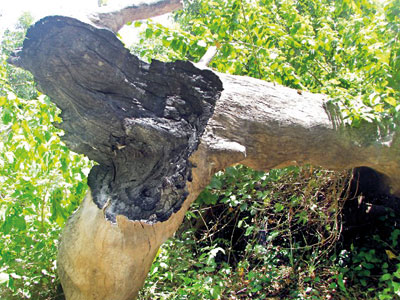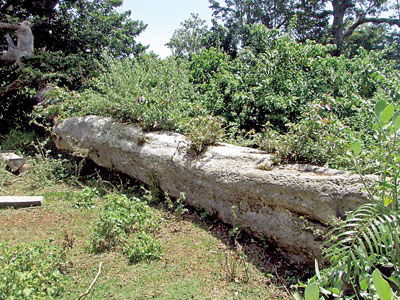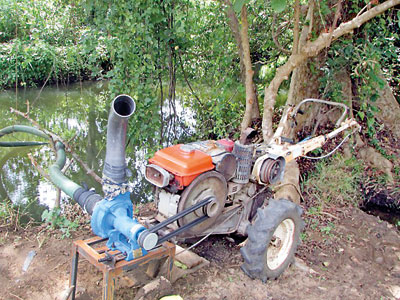News
Destruction visits Mahaweli flood plains park
Large scale destruction is happening in the Mahaweli Flood Plains National Park that stretches from Trincomalee to Polonnaruwa.
It is a feeding ground of elephants and also a haven for migratory birds, which are seen in the marshes.
There are dozens of villus in the park that retain the Mahaweli flood water. Endemic freshwater fish such as the flying barb are found in the flood plains, along with species such as tilapia.
Visitors are prohibited from areas within Somawathiya National Park and the Flood Plains National Park.
Now, hardwood trees are being chopped and vast areas of land are being cleared for illegal cultivation, according to information obtained through an RTI request.
On Sep 7, 1984 the park came under protection taking into consideration its eco systems and wildlife. The Department of Wildlife Conservation is the sole authority of the 40,000 acres bordering the Mahaweli River.
Unlike Yala, Wilpattu and Wasgamuwa, the eco system here is not exposed to visitors so it can be maintained as a highly sensitive eco system.
The other special feature is, when the park is flooded by the Mahaweli River, its 33 marshy lands are enriched with nutrients. This is also a park where elephants called “vilu ali’’ can be seen.
Marshy lands abound with water plants and inland fish, and the park nurtures indigenous trees like Kumbuk, Mee, Bak Mee, Ebony and grasslands.
But some mighty hands have begun to destroy the park.
The destruction becomes evident about a kilometre inside the park from Onagama. Huge, age old, trees – that not even 10 people can encircle – have been felled.
Some trees bear the scars of fire and chain saw teeth.
All this has happened despite the park coming under the protection of the Fauna and Flora Protection Ordinance.
While trees are being chopped down, organised criminals are grabbing land in the park.
More than 4,000 acres have been cleared to grow rice.
Hand tractors can be seen inside the park.
While the police have tried to act on complaints made by those living close to the park, they are being hampered by wildlife officers.
When the Sunday Times tried to get information at the Polonnaruwa District Secretariat, Additional District Secretary, W P W Wanasinghe, provided us with a report on the problems faced by them and said, “This is not a formal inquiry. We will hold a formal inquiry very soon.’’
According to a basic inquiry, it has been revealed that the Pulasthigama Govi Jana Seva Madyasthanya has been providing the illegal cultivators with fertiliser subsidies for a long period.
The mighty hand behind the destruction of the protected flood plains park remains a mystery.

Felled giant trees

Signs of illegal activities

